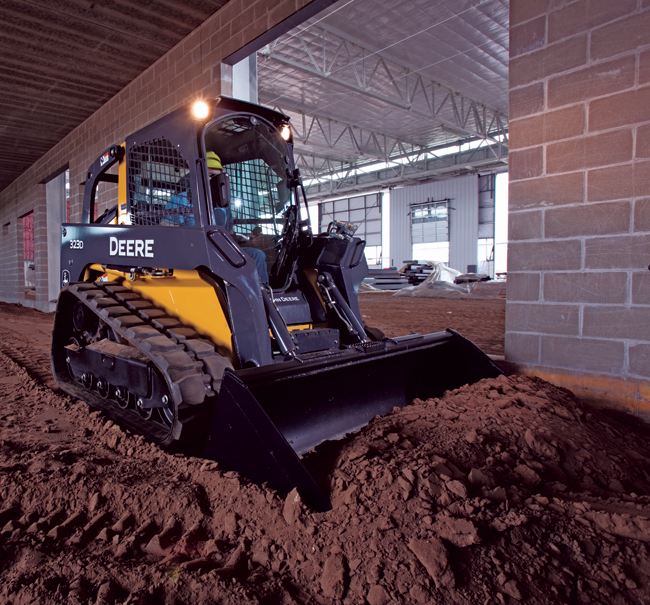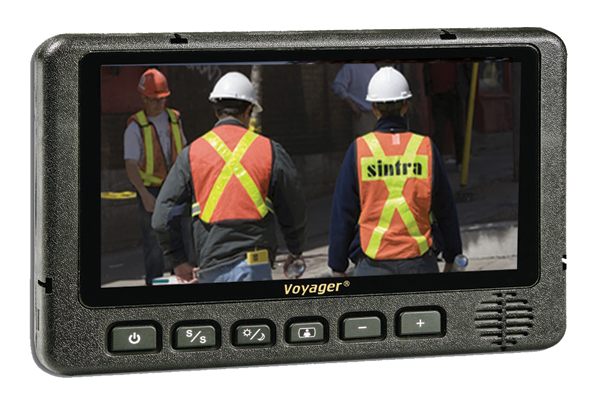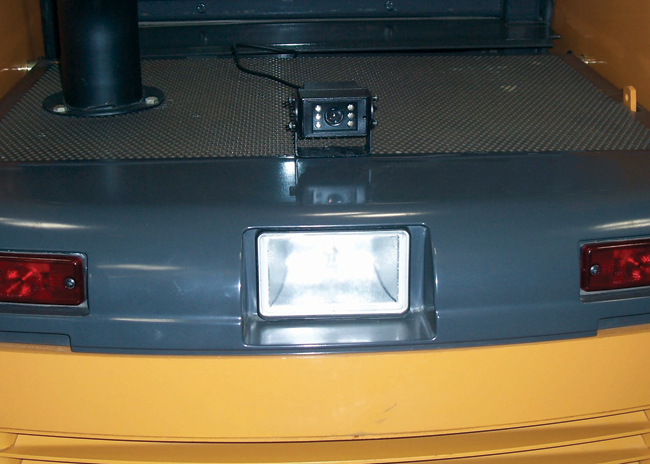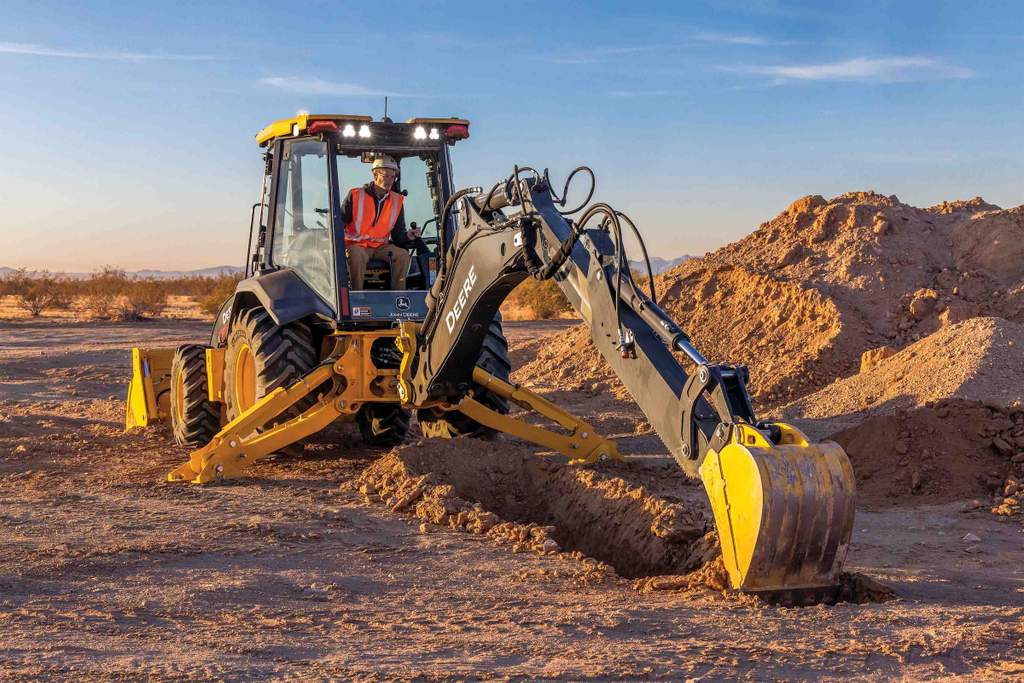Vision Quest

Compact equipment is just that — compact. There’s a whole industry dedicated to small and maneuverable construction and landscape equipment, everything from skid steers to wheel loaders and telehandlers, all built compact for the job at hand. However, “compact” isn’t always synonymous with “easy to handle.” We all know enough about tricky work environments and limited space constraints to write our own book on the subject.
But do we know enough about the safety solutions that can help us alleviate the challenges we are faced with when we encounter tight, awkward maneuvering conditions?
We’ve all heard about the collision avoidance systems typically installed on cars, minivans and trucks, but those systems just aren’t practical or heavy duty enough for equipment use. Let’s be honest: Our issues don’t exactly lie with other passenger cars on the road and making wide right turns. We work in rugged environments and consumer electronics are not built to survive harsh construction and jobsite elements.
Unfortunately, there are numerous consumer grade systems currently being sold in the commercial industry.
Although they may work well initially, if you are planning on using your systems on a regular basis, you’ll want to look into heavy-duty units proven to handle the extremes of the construction business.
Luckily, there are a handful of true heavy-duty observation products in the market. Time to shed light on the intricacies of how you select an ideal system fit for your equipment, what key features to look for and how to install a system so that it is most effective in keeping you, your coworkers and your equipment out of harm’s way.
There are many common visibility issues for construction equipment applications, and with escalating insurance rates, jobsite safety and worker retention at the forefront of many site managers’ minds, camera systems often times become more an issue of necessity, rather than a luxury. On a skid steer, compact track or wheel loader, for example, there is constant back and forth movement. Each time a machine is reversed, drivers must strain to turn around and look behind them for obstacles or coworkers in their path.
The visibility in a piece of equipment like a skid steer is very limited and large rear blind spots are inevitable. With excavators or backhoes, blind areas are similar — only the shovel or tail swing is moving around when scooping and dumping. That makes it very easy to inadvertently strike someone or something in the near vicinity. In fact, any compact machine in a tight spot or loading area requires the type of vision awareness that drivers simply cannot do safely from the driver’s seat. That is where a camera system will certainly come in handy to any fleet of vehicles.
To alleviate these problem areas, there are key points you can use when selecting an effective camera/monitor system.
“First and foremost, before you even decipher what observation products you need, you’ll need to make sure you have found a system built to last through the same types of conditions that your machine encounters,” says Fred Roetker, compact equipment sales manager at ASA Electronics, one company that manufactures industry-specific Voyager heavy-duty observation systems. “Make sure you choose a brand that has true heavy-duty features, not just passenger car systems that sound good on paper, but perform poorly in the environment.”
Once you find a durable system, give thought to what you want to be able to see.
Determine where your blind spots are the most extreme and where you find the most challenges to obtaining a clear and safe view. That will tell you where a camera should be the most effective. Next, you will want to think about your typical line of vision. Are you staring straight out of the cab at the job at hand or are your eyes heaven-bound when working with a telehandler? This will help you resolve where to place the video monitor.
“The monitor should be placed in an area in the cab where your eyes naturally gravitate,” says Roetker. “This will give you the best visibility without having to take your eyes off the project. After all, this is a safety feature and when installed properly, it should be easy and feel natural to use like a rear view mirror in a car.”
Once you determine where the monitor and cameras should be placed for your particular equipment, you’ll need to consider what features you require in a system. Will this camera system be installed in an enclosed or open cab? This question is very important as it will determine whether you need a waterproof monitor. There are heavy-duty waterproof monitors in the market that are built to resist water spray and there are even models available that keep out dust, dirt and grime as well. The last thing you want to worry about is component reliability while out on the job.
Will you need more than one camera hooked up to your monitor? Some drivers find that having a second or third camera on the back, side or front of a machine is the most effective. If this scenario fits, you’ll want to select a monitor that has multiple camera hookups, so you can view all camera images on one monitor, either one at a time or simultaneously with a split-, tri- or quad-screen feature. Also, make sure you avoid running the wires through a place where pinching is likely, as you run the risk of the system shorting out or not working at all.
Does the job require you to work in evening or nighttime conditions? If so, there are cameras available that are 0 Lux capable, meaning they present clear, easily-viewable images even in complete darkness.
Is your equipment built in such a way that you are pressed to find a good spot for just one observation camera? When working with very limited equipment real estate, you may need to go with a smaller CMOS camera (complementary metal oxide semiconductor camera) as opposed to a CCD camera (charge coupled devices camera). As we all know, small equipment doesn’t mean you pack less of a punch. CMOS cameras still have excellent Lux ratings but they do not require as many IR LEDs as slightly larger CCD cameras.
Therefore, they are more diminutive. CCD cameras will provide users with truer color quality, but since they require an increased number of LEDs, you have the size issue you may need to consider. Either camera is very effective for equipment use; just make sure they are water and dirt proof, so you don’t have to encounter issues with damaged product.
Currently, there is also a lot of talk about wireless observation systems. Customers are constantly looking to simplify and downsize the wires they have strung out throughout their machines, but when it comes to an observation system, the truth of the matter is they still have to run power and ground to the camera, eliminating the “wireless” aspect, and the performance is often found to be questionable at best. Systems usually require a line of sight to the monitor and power lines can create problems with the transmission as well. You might also encounter issues with a delay in what you see versus what is happening in real time. Delays cause accidents and that is exactly what a vision system is helping you avoid. Best to stick to a wired system, at least until reasonably-priced, digital wireless is readily available.
If you find a vision system that fits your equipment needs and is built to handle the ruggedness of the construction industry, you’ve hit the nail on the head. You are also bound to reap the benefits of better visibility and enhanced safety while out on the job. The investment should be well worth it when you consider the increased safety you can enjoy, not to mention the money saved on damaged equipment repair.
Alaina Weimer is the public relations specialist for ASA Electronics, based in Elkhart, Ind.








Comments are closed here.